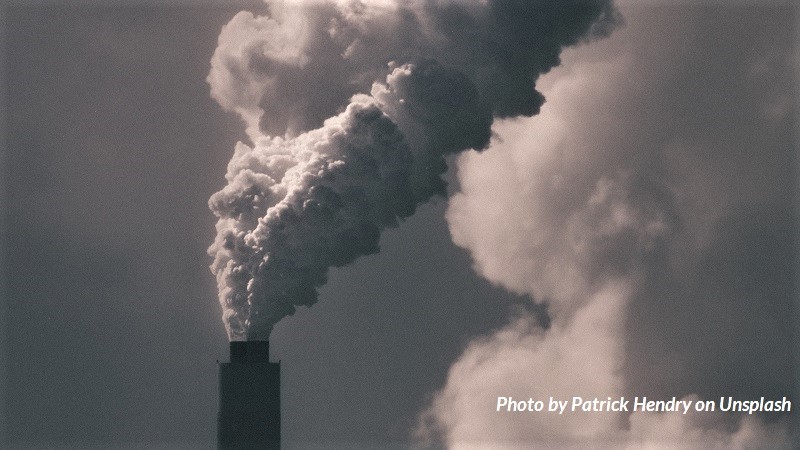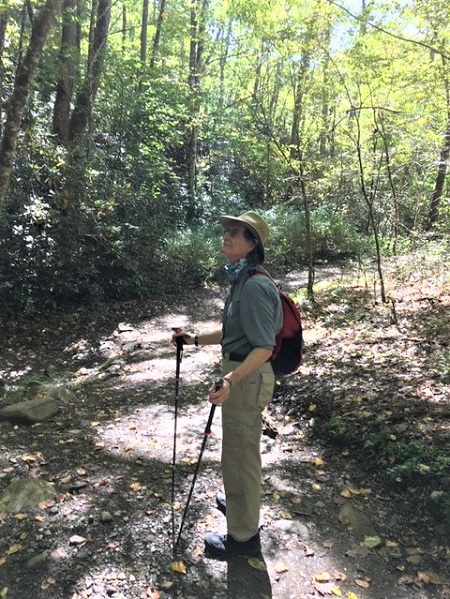Nearly 20 years ago, North Carolina's biggest cities found themselves near the top of a category no civic booster would want to claim: dirtiest air in the nation.
 The state's Clean Air Task Force found that high-ozone days in North Carolina resulted in 1,900 respiratory hospital admissions, 630 emergency room visits for asthma and 240,000 asthma attacks, according to a 2001 article in the Independent Weekly. It also noted high rates of childhood asthma across the state.
The state's Clean Air Task Force found that high-ozone days in North Carolina resulted in 1,900 respiratory hospital admissions, 630 emergency room visits for asthma and 240,000 asthma attacks, according to a 2001 article in the Independent Weekly. It also noted high rates of childhood asthma across the state.
A professor of emergency medicine at UNC Hospitals in Chapel Hill, quoted in the story, laid the blame on air pollution. That physician, Wes Wallace, was also a leader in the N.C. Sierra Club's campaign to get North Carolina lawmakers to do something about the dirty air.
How that happened - the passage and enforcement of the state's Clean Smokestacks Act - is another story we're sharing about the Chapter's history during our 50th anniversary year as part of the nation's oldest environmental advocacy organization.
Cleaning up the air wasn't simply a blue-sky ambition for Wallace (pictured below). It was part of his lifelong personal mission to protect people's health.
 "It used to be, if you went to the Great Smoky Mountains and stood on the top of a mountain there, you had a sight distance of almost 50 miles. By the early 2000s, that had decreased to less than nine miles," he recently recalled. "Physicians all over the state, including myself, began to realize we were seeing more and more cases of asthma, exacerbation of emphysema and other chronic pulmonary diseases. And the tourism industry was concerned because this wasn't as pleasant a place to visit."
"It used to be, if you went to the Great Smoky Mountains and stood on the top of a mountain there, you had a sight distance of almost 50 miles. By the early 2000s, that had decreased to less than nine miles," he recently recalled. "Physicians all over the state, including myself, began to realize we were seeing more and more cases of asthma, exacerbation of emphysema and other chronic pulmonary diseases. And the tourism industry was concerned because this wasn't as pleasant a place to visit."
Working with environmental and medical allies in the state, the North Carolina Chapter succeeded in getting lawmakers to pass the landmark Clean Smokestacks Act in 2002.
The legislation was a follow-up to the federal Clean Air Act, passed in 1970. It set stringent caps for pollution from old coal plants that had continued to spew pollution into North Carolina's air thanks to grandfather clauses of the federal act. It also gave North Carolina's attorney general the resources to fight emissions from neighboring states.
"The Chapter worked very closely with the American Lung Association and many other environmental groups within the state to focus attention on this issue, to show it was a solvable problem," Wallace said.
The allies' efforts weren't immediately successful. Industries concerned about rising electricity prices pushed back. Their fears were only allayed when then-Gov. Mike Easley pledged that any rate increases would be spread out over a tolerable amount of time.
As a physician and a volunteer leader with the N.C. Chapter, Wallace was called upon several times during debate over the bill to explain to legislative committees about the havoc dirty air can wreak on public health.
"I guess the pièce de résistance was usually pulling an endotrachial tube out of my jacket pocket; it's a a piece of plastic about [a foot] long and as big around as my index finger, and explaining that when people went into severe respiratory failure, I had to put this into their windpipe and put them on a ventilator," he said. "And I didn't need a newspaper or a radio broadcast to tell me when we were having a poor air day. … I could simply tell by the number of people I had to intubate in the emergency department."
That testimony, he said, was often received with surprise: "I don't think the legislators really understood the health impacts."
In the end, it won them over. The act, as passed, directed the state's power plants to drastically cut emissions of nitrogen oxide and sulfur dioxide.

Duke Energy was operating 14 coal-fired units in North Carolina at the time. Since then it's retired one unit and cut emissions ahead of the legislated deadlines at the 13 remaining, which are contained at four power plants. This September, the utility filed a 15-year plan that described scenarios for retiring all of its power plants that "rely exclusively on coal" within the next 10 years.
Ten years after the act was passed, a UNC study found that the risk of premature death from fine sulfate particles from coal-fired power plants had dropped 63 percent in North Carolina, preventing as many as 1,700 deaths.
The campaign for the Clean Smokestacks Act did more than clear North Carolina's air, Wallace said. It taught the North Carolina Chapter how to flex its policy-driving muscles by showing pollution's human cost, offering workable solutions to the problems it named, forming cross-cutting alliances with other groups, and marshalling a statewide army of passionate environmentalists.
That earned knowledge will be critical as North Carolina's Sierrans continue to tackle the most urgent environmental issue: climate change and carbon emissions, he said.
"If we don't get on top of this issue, the public health impact, the economic impact in our state, will be almost beyond imagining. But in the same way we dealt with these noxious emissions, we can also deal with climate change and CO2," Wallace said.
"What this says is that the environmental health movement in North Carolina is strong and robust and it's growing. We can be an extraordinary force if we work together with our allies, if we can join public health and environmental issues. A brighter future for all of us is possible if we can get this right."